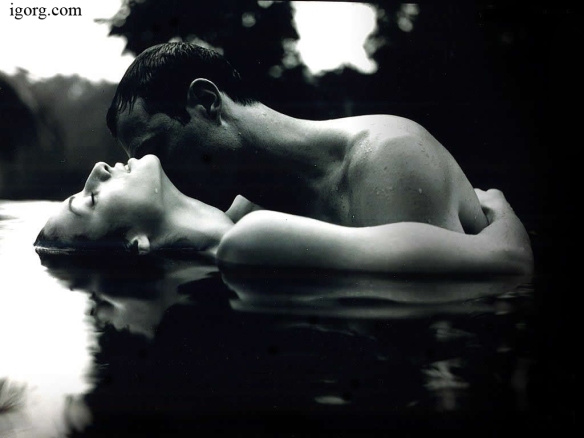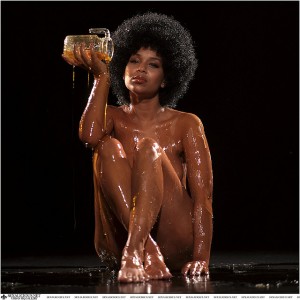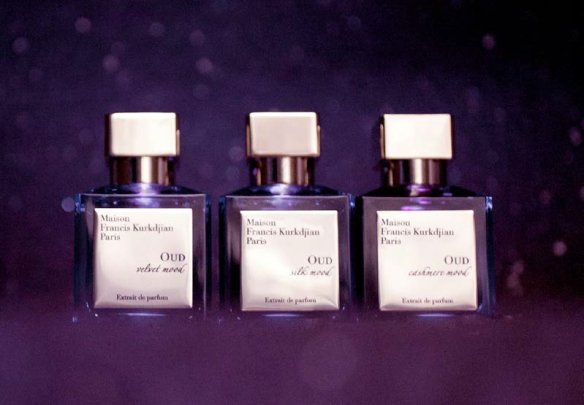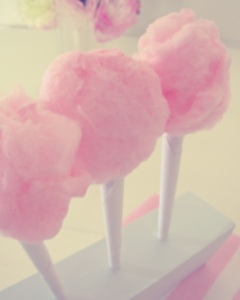
Source: 3dwallpapers.co.in.
Large grey-blue waves hit the black, moss-covered rocks, spraying cooling salted water over the heated, sweaty bodies of the intertwined lovers. There was a note of the tropics in the air, as if a Filipino fruit-seller’s roadside stall had exploded nearby, the passionfruit symbolically matching the passion in the air. Heavy, opulent flowers laden with honey were there, too, so rich that they almost border on the over-ripe and match the goo of the fruit. The lovers kissed, their bodies cushioned on the plush velvet of mossy patchouli, and one bit the other’s shoulder with a moan.

Source: foto.libero.it
The salt of the stormy seas is the very first impression that hits you when you put on Onda Eau de Parfum from Vero Profumo, followed not long thereafter by the image of sweet, heated skin. As the heavy, rich, intimate notes swirled on my skin, I decided almost immediately that I would — nay, must — one day buy this perfume. It is rare for me to think that mere minutes into testing a perfume and without waiting for its full development, but Onda’s complicated, extremely unusual, completely unique nature ravished me. It’s really hard not to think about sex and the human skin while you’re wearing it, but that seems to have been the goal of Vero Profumo. “I love everything that reminds of the smell of skin,” says its founder, Vero Kern, on the very first page of the company’s website. It shows, believe me, it shows….
Vero Profumo (sometimes written with odd punctuation as “.vero.profumo.“) is a Swiss niche perfume line that was established in 2007. Vero Kern‘s first three fragrances were Onda, Kiko, and Rubj, and they were released that same year. According to Fragrantica, all three pure parfums or extrait de parfum fragrances were intentionally made in the grand, classic French tradition of Mitsouko, Shalimar and Chanel No. 5 . As Ms. Kern explains on her website:

Vera Kern of Vero Profumo.
I go my own way hundred percent and do not follow any trends. I’m looking for originality, opulence and eroticism in scents. They have to surprise and to touch me. I’m not interested in ‘clean’ scents; I need characterful scents both in my creations but also as wearer.
How incredibly refreshing to have a perfumer bluntly state that she is not interested in creating “clean” scents! And to focus on erotic opulence? Bravo!
In 2010, three years after the launch of her parfum trio, Ms. Kern introduced the same fragrances in eau de parfum. However, the fragrances were not simply a milder form of the originals but, rather, slightly altered versions. Fragrantica provides Vero Kern’s explanation of the key differences:
The new perfumes are not the diluted version of the extracts. An eau de parfum needs a structure highlighting more the top notes as opposed to the base notes, but with the aim of keeping the original style of the extract intact”.

Onda Eau de Parfum.
In order to render the scents lighter and easier to wear, the compositions have been simplified; yet that “je ne sais quoi” unmistakably characterizing the extracts is still clearly there. “I replaced the animalic notes with the unique scent of the passionfruit – says Vero Kern – I personally love it very much and think that it lends a sensual and erotic lightness to the composition”. Like an invisible thread, the intriguing scent of passionfruit links the three perfumes: it is at the core of everchanging, unexpected olfactory sensations with multifaceted evolutions.
[With Onda in specific,] Vero added passionfruit in the top, and slightly changed the base notes (cedar instead of sandalwood).
Luckyscent provides the following notes for the perfume which is categorized on Fragrantica as a “woody spicy”:
Bergamot, citron, mandarin, ginger, coriander, basil, passion fruit, iris, ylang-ylang, honey, vetiver Bourbon, patchouli, musk, cedar wood.
Onda Eau de Parfum opens on my skin with the salty tang of the sea. It’s cold like the Atlantic, but it also feels like a green salt marsh. At the same time, there is a surprising hint of the tropics in the air. The combination creates an incredibly unusual, mysterious, unique scent — and very sexy one at that, too.

Salt marshes via Flickriver.com.
Soon, woodsy notes arrive, but none of it feels like usual trees or vetiver, per se. It’s something that occurs to me again and again as I try to pinpoint the notes of the perfume. It’s as though Ms. Kern has twisted the way in which certain notes are usually manifested so that they seem completely different. All you’re really left with are impressions and feelings, moods and images; there are very few individually distinct, sharply delineated, really traditional notes of vetiver or trees. You smell woodsy notes, but something about them is different. Or, perhaps, the way they combine with the other notes has transformed them. This isn’t the vetiver in something like Terre d’Hermes, Guerlain‘s Vetiver or Chanel‘s Sycomore; it’s not the cedar wood in a Montale or Ormonde Jayne fragrance. Nothing is ever quite like what it’s supposed to be and, yet, it somehow conveys the feel of woodsy notes as well as any other perfume.

Passion fruit. Source: fo-od.co.uk.
Perhaps it is the originality of the combination that makes the individual elements feel so transformed. For all the salt of the Atlantic ocean, you have the greenness of a very heated, green marsh; the gooey ripeness of passionfruit; the feel of oakmoss (even though there is absolutely none in the perfume); skin notes; an abstract feel of flowers that seem almost elusive in those opening minutes — and a quiet veil of sweetness over the whole lot.

Source: Twitter.
Though the perfume feels like some sort of chypre with a citrus start, the citron, mandarin and bergamot never feel distinct. Though you have the velvety plushness of a very green, mossy patchouli, that too feels almost amorphous and abstract. The same applies to the slightly tangy citrus and fruit notes that waft elusively in the air. The perfume is so magnificently blended that it all swirls together in a harmonious whole. Onda never even throws off prisms of notes; it is just a sum total of experience, mood and feel that is really extremely hard to describe.
It is, quite simply, a phantasmagoria. The dictionary defines the term as:
noun
1. a shifting series of phantasms, illusions, or deceptive appearances, as in a dream or created by the imagination.
2. a changing scene made up of many elements.
3. an optical illusion … in which figures increase or diminish in size, pass into each other, dissolve, etc.
Minutes in, the image of heated skin starts to join the swirl of images. It’s not animalic and, yet, it is. The scent is not like rancid sweat, but perhaps, like fresh, clean, slightly sweet, salty, heated skin with the sheerest, merest touch of a leathery undertone. It’s not raunchy or grossly intimate; there is no sense of unwashed panties or sweaty crotches; and there is no lurid musk. With the tinge of honeyed sweetness, it is, quite honestly, like the smell of sex. Not the sweat-infused, raunchy smell in the air afterwards but, rather, like the scent of your lover’s skin during the early, tender intimacies, when you bite his shoulder and smell the scent of his neck. The combination of the salty, honeyed woods and the sea, with tart, juicy, gooey, ripe citrus, and subtle animalic notes that almost verge on the leather …. well, it’s mesmerizing, tantalizing and simply stunning.

Source: www.stihi.ru
For much of the Onda’s early development, the perfume never wildly deviates from its core essence. At times, the citrus, fruit, and musk notes fluctuate in prominence; at other times, the perfume itself seems to undulate in projection and strength. After the first hour, it seems to get softer, turning much less woody and salty citrusy. But then, surprisingly, it seemed to get stronger, more concentrated and more intense when the honey notes started to take over. And that begins to occur ninety minutes in, when Onda turns more animalic and more floral. There is the feel of richly honeyed flowers with mossy patchouli, vetiver, those animalic musky skin notes, and the merest touch of light powder underneath it all.

Source: etshoneysupliers.
Three hours in, Onda is all honeycomb, beeswax and rich honey atop lush, velvety flowers with animalic accords and the hint of earthy vetiver. As the honey grows stronger, there is the sense of something leathery swirling around. It’s almost a little like honeyed rawhide leather at times — sharp, dark brown, and deep. Something about the combination feels almost biting; I could feel the honey high up in my nose, almost burning the bridge of my nose. It’s subtle, but it’s there and lasts for a few hours. I applied just a little over an 1/8th of a vial since this is, after all, eau de parfum, but it’s as if Onda’s notes have doubled in strength and intensity. The honey has become akin to the most concentrated form, dripping dark and molten over the heady, indolent, languid flowers with that leathery bite underneath. It feels lush, opulent, oriental, highly charged, almost sexual, and incredibly rich.
Onda remains that way for hours and hours. It’s heavy honey with slightly skanky undertones and darkly rich leather. The notes sit atop the lightest suggestion of vetiver and vanillic powder. And, to my astonishment, despite the hours, the notes barely seem to fade an inch in potency until the very end! All in all, Onda lasted about 12.5 hours on my perfume-consuming skin. In its final hours, it was simple honeyed musk.
Onda is a very powerful, strong, incredibly rich, opaque and heavy perfume but it doesn’t feel thick, if that makes sense. I would never call this lightweight in feel, but it is much airier and lighter than the notes would have you imagine. Yet, it is incredibly potent. Onda EDP would make some of the strongest Tom Ford Private Blend perfumes seem positively mild in comparison. Especially when you consider that I put on only a little over 1/8th of a vial — not much at all! The projection is potent too, initially radiating out perhaps a foot in the first 30 minutes, before becoming softer and staying in a tiny cloud around you. But, it’s pretty damn intense within that cloud. I was walking The Hairy German when I came across a neighbor and stopped for a chat. Though we stood only a few feet apart, she couldn’t smell the perfume. But when I asked for her opinion, and brought my arm a few inches from her nose, her head jerked back at the strength of the notes.
She didn’t like Onda — and I don’t imagine most people will. While her tastes veer towards the “light and citrus,” I think Onda may be far outside a lot of people’s tastes. The people who will swoon at Onda will only be those who can handle the animalic, leathery undertones. Those who adore sheer, airy, fresh florals, who despise naughty notes, and/or who shudder at the thought of potent, extra-rich perfumes should stay very, very far away. This will be far too unusual, difficult, rich, fetid, or sexual for their tastes. It may even seem a little crass to them, like a public display of affection that becomes a little bit heated.
Luckyscent and Now Smell This have two very different takes on the perfume which I think show both sides to the scent. Now Smell This wrote:
It’s rare to smell a fragrance that seems completely new, like nothing else on the market. It’s even more rare to find something that smells not only new, but at the same time ancient, as if unearthed from an Egyptian sarcophagus. Astonishingly, Vero Profumo Onda manages this last trick. There’s nothing of the focus group about it. If someone told me Onda was Mata Hari’s secret weapon, I’d believe it. If she told me Onda was Comme des Garçons’ latest fragrance, “Bilge Water Supreme,” I’d believe that, too. It’s a marvel. […][¶]
Onda in Eau de Parfum is, if anything, more difficult than Onda extrait. It has less powder than the extrait and less animalic depth, but it is more herbal-bright and more “rotted” smelling. […] I prefer Onda in extrait. I find it richer and deeper, and, in some delicious way, scarier. Both forms of Onda last all day on skin. If you are fascinated by Onda, you’ll rejoice in its persistence. Otherwise, you’ll find it a scrubber extraordinaire. Either way, I don’t think you’ll leave Onda unmoved.
Luckyscent‘s take on it is a little less terrifying:
[I]f a fragrance ever needed taming, it is Vero’s wild, dusky, brooding Onda, as close to an alchemical potion as a modern perfume is ever likely to get. In the eau de parfum, the ginger, vetiver, honey and patchouli still simmer with earthy sensuality, but the composition gains an airiness, a sense of space that make the notes an easier fit for daytime wear. The overtly animalic notes have been replaced by the equally animalic, but brighter passion fruit. Don’t be fooled: the leather-clad femme fatale hasn’t come over from the dark side of the forest. But she’s just cracked a smile.
It’s funny how the perfumistas I know in groups seem to rave about Onda in Pure Parfum/Extrait form, while the reviews on Fragrantica for the Eau de Parfum would be enough to put you off trying it forever. They are, generally, quite negative:
- Announcing the autumn of fertility, this is (IMHO) a smell to wear as you rot on the vine.
- The eau de parfum Onda continue woody-spicy notes of honey, the sweet-spicy, earthy, while the iris, ylang-ylang and sensual feature a cleaner, yet more erotic results perfume.
- The smells that comes to mind are cool wet earth, leather, tobacco, warm wood, smoke. It’s pungent, animalic, meaty, rich. All of that is the opening of Onda,it’s unbelievable, you’ll either love it or hate it, for me it is misterious and unique.
- I’ve found a more suitable name for this fragance:
SALT-MARSH
- Saying that Onda EDP is a challenging composition would be like considering Marcel Proust and easy read. Onda is far beyond being just challenging, is weird, destabilizing and unusual but at the same time “cultured”. It is built around a solid structure that shows many characteristic of classic perfumery and adds a bizarre, sort of futuristic, accord of passion fruit and vetiver that together with floral pattenrs and ginger gives birth to a strange blend that sits somewhere between a disinfectant, a mass destruction weapon and pure luxury. Overall Onda smells salty/sweet with fresh nuances, flowery with acidic/unripe fruits and definitely sulfurous (urine?). While all of this may sound disencouraging, I still believe that Onda deserves our respect as one of the most intriguing, complex and original compositions around. Onda, more than like a proper fragrance, sounds like a declaration of intent that says “I’m here, and I’m here to stay!”.

“Lisa Raye. Dripping honey on her body.” Portrait by Brad Miller / Retna Ltd. 2002. via Flickr (Link to Flickr page embedded within.)
My experience was very different from that of a lot of those reviewers, and I had to laugh at the comment about the “mass destruction weapon.” That said, I can absolutely see how someone with a taste for more traditional, less unusual perfumes may reach that conclusion. The “skanky,” almost leathery notes are definitely a problem for a lot of people. But so, too, is the honey note. Though I never smelled anything sulfurous, the honey did burn my nose at times and I suspect it may turn very rancid on some people’s skin.
Freddie of Smelly Thoughts who has perhaps the most cutting-edge, avant-garde taste in perfumes of anyone I know wrote a bit about that particular issue:
The honey becomes undoubtably urinous, and considering I can douse myself in Miel De Bois with ease, yet can detect the sulphorous notes in this, should let you know how potent it comes off. However, it is blended with the spice, citrus, and over-ripe fruit notes so well, it becomes merely another appealing, complicated piece to this Onda puzzle.
Yet, despite the funky honey note, he adored the perfume as a whole:
Onda EDP opens absolutely wonderful, with a pronounced vetiver note upfront – I love the vetiver already, it is that dank, dirty salty vetiver which is the only type I seem to really enjoy. There’s a real spice overlaying this, a harsh twang of sharp ginger, and some pungent citrus and bergamot. […]
There’s some bizarre fruit accords in this, and an unusual one listed is passion fruit… I love passion fruit but it’s not really what I’m smelling. To me it’s more the feel of an over-ripe banana, in the similar way that Christopher Brosius used this over-ripe quality in In The Summer Kitchen. An almost dustbin like vegetal effect that is bizarrely compelling. […]
First impressions? I love this. At first, and for the first ten minutes, I thought “Hmmm…. interesting I guess”, but then attempting to work this thing out, it gets complicated. I feel like I’ve solved it now, 20 minutes later, and I love the outcome. Already I can see this becoming a full bottle purchase, it’s completely unique – a blend of animalic honey, candied ginger and citrus, salty vetiver (which becomes nothing more than a wonderful base rather than a lead) and softened fruit. Outstanding.
Though his experience was different from mine, I share his final, overall conclusion. For me, with my tastes and given how it manifested itself on my skin, Onda EDP was outstanding. I loved every minute of it. However, I definitely would not recommend it for the general masses or for the faint of heart. In fact, unless you passionately adore heavy, opulent, skanky orientals or leather-chypres, I wouldn’t even bother testing it. But if you’re someone who loves perfumes like Maison Francis Kurkdjian‘s Absolue Pour Le Soir, Rochas‘ Femme, or Amouage‘s Jubiliation 25, then you should absolutely give Onda a try. For that very select group of people, Onda may well be love at first sniff.
DETAILS:
Cost & Availability: The Onda being reviewed here is only the Eau de Parfum version and it is available at Luckyscent for $200 for a 50 ml/1.7 oz bottle. (The Vero Profumo website does not seem to sell the perfumes.) Outside of the US, the Vero Profumo Facebook page offers a whole list of European retailers from Kiev, Russia, to Oslo, Norway, and Italy. It also adds: “Since 2010 distributed worldwide by Campomarzio70 in Rome Italy, in selective boutiques and perfumeries such as ROJA DOVE, Harrods Urban Retreat London, JOVOY Paris, Parfums Rares and many more. Campomarzio70, marketing@campomarzio70.it will inform you where you find the nearest retailer in your country.” I checked the website for Campomarzio70 and it doesn’t seem to sell the perfumes online, since I could find no “online cart” (so to speak), no pricing options or no way to purchase the perfumes, but you can try to check for yourself. In the UK, you can find all Vero Profumo perfumes at Harrod’s Roja Dove Haute Parfumerie, but there is no online website through which you can purchase perfumes. (It is not the same site as the Harrod’s website.) At Jovoy Paris, Onda retails for €145. In the Netherlands, you can find it at Leanne Tio Haute Parfumerie. Germany’s First In Fragrance carries not only the complete Vero Profumo line but also offers sample sets. They ship throughout the world. As for samples, I obtained mine from Surrender to Chance as part of Vero Profumo Three-Perfume Sample Set (Onda, Rubj, and Kiki); the set is only for the EDP concentration and prices begin $13.99 for a 1/2 ml vial of each. Surrender to Chance offers single vials of Onda Eau de Parfum by itself, however, for $5.99 for a 1/2 ml vial. It also sells Onda Pure Parfum for $9.99 for a 1/4 ml vial, $19.98 for a 1/2 ml vial, and up.
 MFK describes Oud Velvet as follows:
MFK describes Oud Velvet as follows: MFK describes Oud Cashmere as follows:
MFK describes Oud Cashmere as follows: MFK describes Oud Silk as follows:
MFK describes Oud Silk as follows:



























